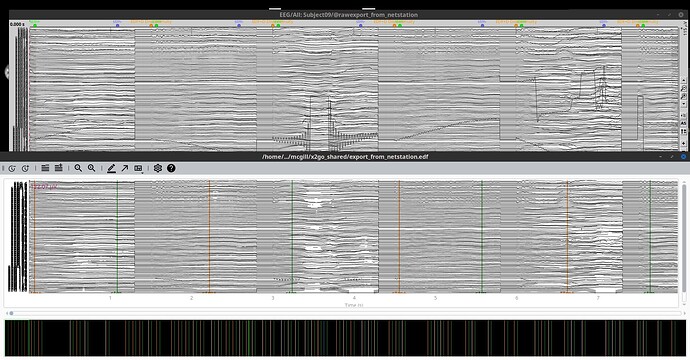Hi @edavid,
This is correct, this option will read the sEEG data with the correct format based on its extension. By using this SEEG option, Brainstorm will automatically treat the channels as sEEG, rather than EEG.
This happens when the data is saved as EDF+D which means that the recoding is discontinuous with interruptions between consecutive data records. Is this the case with your data?
When this kind of data is imported in Brainstorm, all the data gets concatenated, and events called EDF+D Discontinuity are added to show where the data has not continuous.
I tried the lines above with a EDF+D file that I had at hand, and similar to Brainstorm, the data is read in the continuous way. However, it seems in MNE-Python the timing of the events in discontinuous files is not properly handled.
This is not what I see with my data at hand, the EDF+D is read as continuous EDF in MNE-Python, then after processed it is exported as EDF+C (continuous), and this is why once you import it in Brainstorm, it does not showed the message about being discontinuous, as it was changed in MNE-Python
The EDF files have information in their headers to show if they are continuous or discontinuous. You can read the first 200 charcters of the file to check this. If in Linux, run in the terminal:
head -c 200 file.edf
It will show the identifier EDF+C or EDF+D
Since the event timing seems better handled in Brainstorm. You could import your data and do the same pre-processing in Brainstorm without any trouble.
EDIT: Check this other post on the topic:
